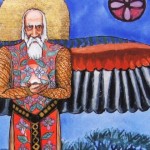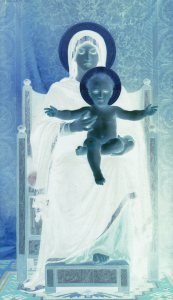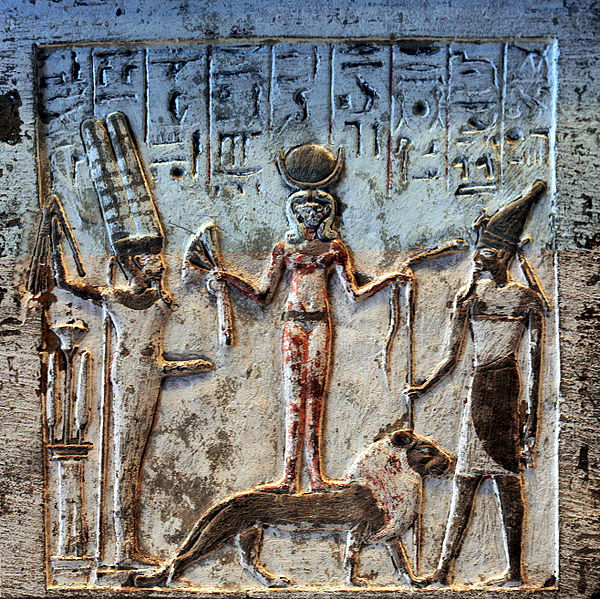A few months ago, I was contacted through Facebook by a lady, Eliane, in Brazil, who I had baptized while I was a Mormon missionary there. We both tiptoed around each other in our first exchange, but eventually disclosed that we had both left the Mormon church.
To put this in context, I baptized probably around two dozen people during the two years I proselytized for the LDS Church more than 15 years ago. Of all those people, Eliane’s conversion was the most important to me, because I felt that I had done something personally to accomplish her conversion, beyond just being the representative of the Mormon church who just happened to be there. I shared some personal aspects of my own story with Eliane and she later told me that, not so much what I said, but how I said it convinced her to be baptized as a Mormon. When we re-met on Facebook, Eliane told me that she was grateful for the time in her life that she had been Mormon, but she had moved beyond it. Even though I left the Mormon church over a decade ago, I felt a strange regret at Eliane’s departure from the Mormon church, and I wondered (again) if the two years I had spent in Brazil had been wasted. While both Eliane and I had moved beyond Mormonism, she seems to have done so with more grace than I.
When I left the Mormon church at age 25, I struggled with how to understand the first quarter of my life, except in terms of regret. My leaving the Mormon church was not just a change of ecclesiastical affiliation, it was part of a longer process of painful transformation. When I was Mormon, I was a dogmatic and intolerant Mormon — in a way that is not characteristic of all Mormons. And for some time after I left the Mormon church, I remained dogmatic and intolerant — just dogmatic and intolerant about different things. My wife accused me one day, after I had left the LDS Church, of not have really changed anything. Indeed, I had become the flip side of the same coin. I even brought some of that fundamentalism with me into my early encounters with Paganism. Facing up to that is a humbling experience. But how to redeem that period in my life is the question for me now.
The Middle Passage
I’ve recently finished reading The Middle Passage by James Hollis, a Jungian analyst, which is about the so-called midlife crisis. Hollis has written another book on the same subject, Finding Meaning in the Second Half of Life, which is written for a more general (less Jungian) audience. These books build on the thesis that there are two broad stages of adult maturation. In the first stage, we seek to solidify and strengthen the ego. We accomplish this often through marriage, children, career.
In the “second half of life”, we begin to experience a growing dissatisfaction. Jung wrote that among all his patients in the second half of their lives (over 35 years old) there was not one whose problem was not, in the end, a problem of a loss of meaning. (“Psychotherapists or Clergy”, in Modern Man in Search of a Soul). This dissatisfaction signals a change which we resist at our peril. It is a change from ego-centric adulthood to Self-centric adulthood. This shift requires a a kind of death of our old self. If we accomplish this transition, then we will live the second half of our lives more consciously and with a greater sense of meaning. Those who fail to make that transition are doomed to frustration and the tragic repetition of ineffective cycles of behavior from the first half of life. In Hollis’ words: “Those who avoided the first death are haunted by the second.”
What is really interesting about Hollis’ analysis, however, is that he does not denigrate the first half of life. He sees it as a necessary stage in our human development. Indeed, according to Hollis, without a fully developed ego from the first half of adulthood, we would not have the psychological strength to endure the requisite death of the ego in the second half. The tragedy is not that we have to go through the first phase, but only that we sometimes continue to try to live in the second phase with the strategies of the first. Hollis writes:
“One must have gone around a track a few times to even know if it is a circle or an oval. Patterns, with their costs and side-effects, can only be discerned as patterns when one has suffered them more than once. In retrospect, one is often chagrined, even humiliated, at the mistakes, the naivete, the projections. But such is the first adulthood: full of blunders, shyness, inhibitions, mistaken assumptions, and always, the silent rolling of the tapes childhood. If one has not set forth and made those mistakes and crashed into those walls, then one would have remained a child. Reviewing one’s life from the vantage-point of the second half requires understanding and forgiveness of the inevitable crime of unconsciousness. But not to become conscious in the second half is to commit an unforgivable crime.“
I know that I have not accomplished the transition to the second adulthood. But I suspect that I am beginning that transition, as I struggle to find meaning in my career, in my marriage, and in my relationships with my aging parents and rapidly maturing children. Coming to appreciate the awkward period of my third decade as an unavoidably necessary stage in my development is part of making that transition to second adulthood. “What can we expect of a twenty-something year old other than to play out the script of the first adulthood?” asks Hollis. Reading this was itself a healing experience for me.
Years ago, I came across a quote, which I now paraphrase”
The secret to happiness
is leaning what is required in each stage of life.
I don’t know who said it, or even where I read it, but for some reason it has remained in the back of my head for almost two decades. I think some part of me knew that this statement, whose meaning I could barely grasp at the time, would later be important to me. And I think I am just now beginning to understand it.
Stages of Faith
Part of coming to terms with the first adulthood is also recognizing the stages in the development on one’s religiosity. A book by James W. Fowler, Stages of Faith, has been instrumental in helping me come to terms with accepting my earlier fundamentalism (which still crops up occasionally). I have found that the more I accept who I have been (including the embarrassing parts), the less anger I have at Mormonism and Christianity in general.
Fowler describes 6 stages in the evolution of an individual’s faith. Different religions cater to people in different stages. Fowler’s Stages 3, 4, and 5 are those ones that will be most familiar, as they mark the transition from adolescence to young adulthood and from the first adulthood to the second. (I’ll detail these in a future post, but if you’re interested, your can get the short outline here.)
Others have described the same stages. Hollis calls these stages: the “magical”, the “heroic”, and the “human”. Alan Watts describes these stages this way:
“In the stage of infancy, the church’s moral teaching is of necessity authoritarian and legalistic. In adolescence, intensely earnest and self-consciously heroic, following after extremely lofty ideals. In maturity, we return somewhat to earth, and find the source of morality neither in external authority, nor in remote ideals, but in the consciousness of God himself in the heart.”
(Alan Watts, Behold the Spirit).
Interestingly, Aidan Kelly describes these same three stages in his book, Crafting the Art of Magic:
“The first is the stage of childhood, during which the myths of religion, learned from parents and others, are believed implicitly. The second stage is the stage of adolescence, during which the critical intellect develops, and the objective facts of ordinary history are taken as the criteria by which to judge the plausibility or possibility of the myths, which are normally rejected as being simply false during this stage, which can last into the late twenties. The third stage is the beginnings of true maturity, in which the person realizes that the facts if ordinary history, being value-free. provide no basis for making decisions about life problems. At this stage the adult can begin to reappropriate the myths, recognizing that they are intended to be primarily statements of value, not statements of fact or history, and recognizing also that an interpretation of the myths which is much more sophisticated than that of a child must be possible; else these myths would hardly have survived for millenia as the basis for the value systems of world civilizations. One mark of true maturity is therefor the ability to tolerate the ambiguous tension between myth and history.”
Fowler goes into greater detail, and in addition to the three stages described by Watts and Kelly above, his analysis also includes earlier developmental stages (Stage 1 and 2), which almost all adult grow out of, and a later stage (Stage 6), which almost no adults ever attain.
The danger of these categorizations is that they are too rigid to account for the variety of human experience, and also that they can be used to inflate our egos as we tell ourselves that we have “achieved” a “higher” level than other people we know. But there are two lessons that I think are valuable to take away from these discussions, wherever we are in these stages: (1) we can look back and see how we have grown and (2) we can look forward to see that we still have some growing to do.
I forgive myself for my intolerance, my lack of vision, my fear, which have hindered me in my past. And I forgive myself for all the intolerance, lack of vision, and fear that I know I will continue to have in the future. But I know now that I am growing and I will continue to grow. And this is how life is meant to be.















